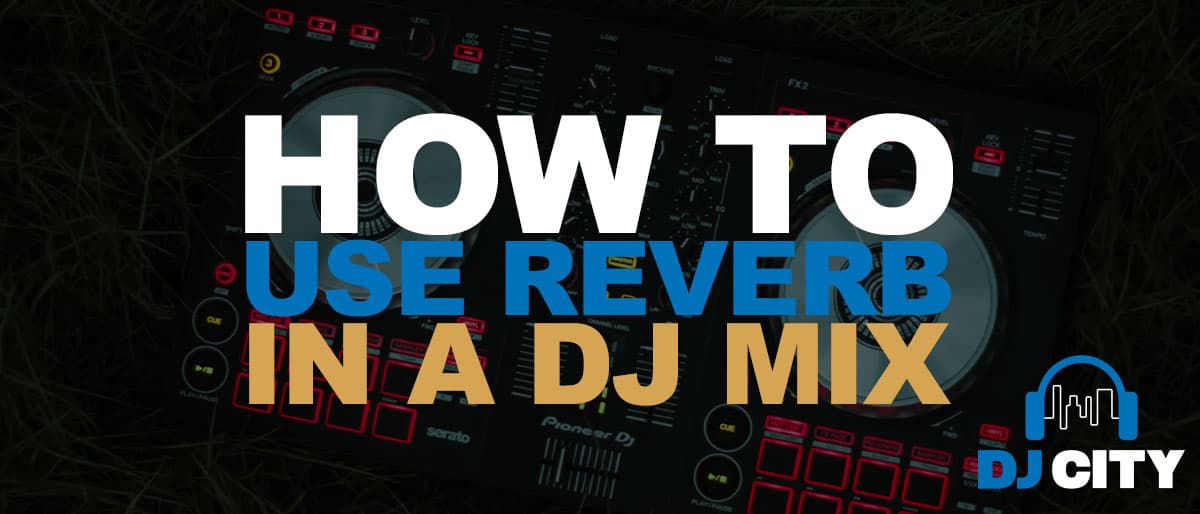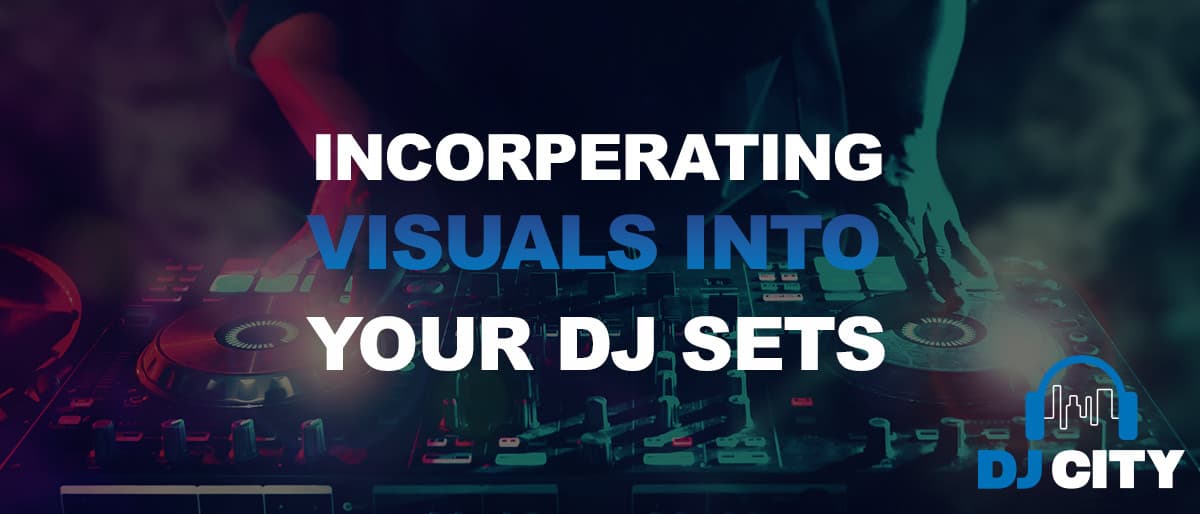
- What makes a DJ mix stand out?
- What is Reverb?
- The elements of reverberation
- Reverb tags
- Pushing the boundaries
- Hardware & Software
- Where to add reverb in your mix
- Transitioning
- Ambience
- Practice makes perfect
What makes a DJ mix stand-out? Reverb!
The days of simply recording a DJ set with no bells and whistles, straight – no chaser, are long gone. In today’s world, you need your mix to jump out and grab the listeners attention. It’s not just the song selection, configuration, and fluidity that matter. But it’s also about the atmosphere, the vibe of the set, and how you can bring more joy and intrigue to your audience. The atmosphere of a set is reliant on what kind of tricks you can bring to the party, so to speak. One of the most powerful and nuanced of them all is the effect of reverberation, or reverb for short.
Use it with careful nuance and consideration, and reverb will bring another dimension to your DJ mix! Adding colour, clarity, as well as drama and excitement. Giving your mix the shine it demands.
But what is reverb exactly?
In scientific terms, reverb is what you hear when a sound hits a surface and that sound is reflected back to your ears. The reflected sound comes back at varying speeds and at different sizes. It all depends on the proximity of the surface and where the surrounding physical space ends. Essentially, a very tight complex echo is created, and the sound of the echo (reverb) is a direct indication of the size of the physical space.
Reverb can be delivered by either an old-school analog sound effect unit or generated by digital software that simulates natural reverberation. Then, you’re able to manipulate and exaggerate, specifically – the parameters of the effect to your heart’s desire, depending on the complexity and range of the unit or software.
The elements of reverberation
There are essentially three main elements to reverb you need to pay attention to. The dry sound, the wet sound, and the size of the sound.
The dry sound is the direct, unaffected sound before being splashed or saturated in reverb. The wet sound is the reflected effect of the reverb on the dry sound. The size is how big or small you choose to make the wet sound, whether it be as small as a closet, or as large as a cathedral.
When manipulating reverb you are playing with the ratio between the dry and wet. If you keep more of the original dry, then the sound (instrument) will appear closer to the listener. Whereas if you make the sound more wet, then the sound will move further away.
The size of the space is determined by the decay time or reverberation time. This is how long the sound takes to fade away entirely. A long decay time means a big room, like a concert hall. While a very short decay, or slap-back echo, can make it sound like you’re in a tiny room.
Reverb tags
Some of the classic size options for reverb include Room, Chamber, Hall, Plate, and Spring. Room, Chamber, and Hall are fairly obvious, but what are plate and spring reverb?
Plate reverb was one of the earliest forms of artificial reverberation. Essentially it used a magnetic coil vibrating against a sheet of metal which was captured by a mic. This analog effect was very popular with rock bands in the 1960s. While the digital version of this rose to massive popularity in the 1980s. Used extensively on vocals and drums. Spring reverb is similar to a plate reverb, only smaller and uses a spring, instead of a plate. Guitarists use them a lot.
Pushing the boundaries
We’ve all had those nightclub dance floor epiphanies. That moment in the midst of the hot and sweaty throng and the breakdown in the song seems so much more accentuated than what we remember it sounding. There seems to be more of it. The nightclub seems to expand to accommodate the juggernaut of a track.
And then that split second before the drop, and you hear the electronic percussion that’s been edging the breakdown closer and closer, dissipates, the rhythmic pulses fading like footprints in the sand vanishing in the surf. It’s a magical moment.
That’s reverb working it’s brilliance! Every intuitive DJ strives to capture that moment, and reverb is a tool that will enhance the existing physical space. So the track transcends its production boundaries and becomes something larger than itself, ethereal even.

Hardware & Software
These days there are a whole bunch of digital software options to allow DJs to manipulate the physical space of the room they’re playing in, simply by twisting a few parameters. The most immediate and most straightforward is the reverb setting on the DJ mixer. Pioneer have had an effects knob since the mid-90s when they introduced the DJM range of mixers, around the same time they introduced the CDJ players, both of which have been considered industry standard for many years.
Today, you’ll find almost every DJ Controller & Mixer on the market incorporate a knob with parameters to quickly access the reverb effect. Whether it’s going straight from the hardware in the mixer itself on higher-end mixers. Or, it’s controlling your favourite DJ Software‘s built-in FX on your laptop or computer. You’re also going to find a range of other effects here you can play around with such as echo, delay, flange, and filter.
Aside from DJing, Reverb is also often used in music production to liven up a song. Similarly, you can find classic hardware versions of Reverb
Where to add reverb in your mix?
Once you’re in tune with how powerful and versatile reverb is, it’s time to use it in your DJ mix. But, you need to tread carefully. Too much reverb will simply turn your mix into a swamp. Subsequently, you’ll lose all that definition in the songs and segues. The best way to approach using reverb within the confines of a DJ mix is to think of the effect as a transitionary tool. Rather than a blanket or umbrella effect. Use it sparingly, but smartly and it’s one of the most powerful and memorable weapons in your arsenal.
Powerful, because it will trigger an immediate emotional response in the listener. As well as memorable, because when you use it at key moments, like the start of the breakdown in the middle of a big track, or the build up at the end of the breakdown; it will be the moment that the listener recalls most often, as it signals a drop is imminent.
Percussion
using reverb on handclaps or the snare during a breakdown is another winner. Slowly and steadily increasing the size of the effect, to pull the listener further back into the “physical” space of the breakdown.
Transitioning
Another great way to use the reverb is instead of simply dry-mixing directly into the next track, have the incoming song beat-matched. But, bring in the reverb over the outgoing track’s beat, as you bring in the new track dry. So that the wet effect washes over the dry sound, then the dry beat pushes through the tail end of the reverb of the outgoing beat.
Ambience
If a breakdown is completely devoid of any kick or percussion, but is using synth pads swirling around, or emotive arpeggios. Then adding reverb will intensify the ambiance and lushness, by adding depth and warmth. It’s curious how by pushing a sound away, as reverb invariably does; it can actually make the sound feel warmer and more enveloping.
Practice makes perfect
Reverb is the ultimate comfy effect. Bringing a nice softness, without compromising intensity or edge. It allows room for creativity and experimentation, while not undermining the integrity of the actual track.
Yes, like all sound effects use, and, like beat-matching and song selection; using reverb cleverly requires intuition and finesse. So make sure you practice with it on recorded mixes, and play it back with decent volume, before you try using it in a club environment. What might sound perfect in the headphones, will nearly always sound different on a big system, and not necessarily better.
So, now you know what reverb does, where to find it, and ways to use it. The question now, is how will YOU use it to take your DJ mix to boss level?






